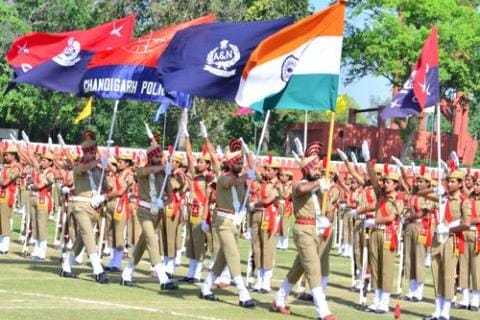Even as the state police faces a shortage at the bottom, Punjab has once again added more DGPs to the rank to take the total to a record 12.
In a throwback to the decades of militancy and staying true to its reputation as one of the country’s most top-heavy police forces, Punjab has once again added more DGPs by promoting four officers to the rank to take the total to a record 12.
In accordance with the state’s authorised strength of IPS officers, there are only two cadre posts of DGP. The remaining 10 are serving either on ex-cadre posts — additional posts created as per requirement by a state police force — or are in posts held by junior ranked officers in the past. Some continue to serve in their old posts but in the DGP rank. One among the 12 is on deputation to the Centre.
Haryana is no better, and the situation can only be attributed to poor cadre management. The state has 11 DGPs, 10 Additional DGPs and over 25 Inspector Generals.
The situation in the states is reminiscent of the decades of militancy of the 1980s and 1990s in Punjab, when ex-cadre posts were created to position officers at operational levels required to meet extraordinary circumstances. Besides 12 DGPs, Punjab has another 12 ADGPs as against seven sanctioned posts, and over 40 IGs as against 19 sanctioned posts.
“The state has a legacy of good policing and we need senior persons at these positions,” said Punjab DGP Suresh Arora, in defence of the promotions.
DGP rank officers in the two states are serving in state human rights commissions, police housing corporations and vigilance cells of state power corporations. There are multiple IGs for crime, intelligence and security. Many IG level officers posted in the headquarters have little work, while those in the field are doing the work of DIG level officers.
“Having a top heavy police does not bode well for any state. Most of these officers are not functionally occupied, and in many cases (are) indulging in conspiring and manipulating to push each other out,” said retired IPS officer Parkash Singh, a police reforms expert. “The solution lies in absorbing these officers in other areas. It could be drug control, railways, prisons, etc. There are several avenues where their experience and training can be put to better use. But to start this, the governments have to be proactive and lead by example,” he argued.
IPS officers have a vertical tenure based promotion system in accordance with IPS cadre rules. Cadre management, however, varies from state to state. Anyone who has served 30, 25 and 18 years in service is eligible to become a DGP, ADGP and IG, respectively.
In Punjab and Haryana, promotions are done promptly after a batch becomes eligible for a higher rank.

Other states with stricter cadre managements, promote officers only when a vacancy arises in the cadre posts. Himachal Pradesh, which has followed the code strictly, has two DGPs, one in a cadre, and another in a non-cadre-post, and two ADGPs.
“We have the leanest police force, at least at the top,” said Z.H. Zaidi, IG (Administration), Himachal Pradesh.
“Promotions should be strictly vacancy based, not tenure based. But the entire civil service system has to adopt this system. The discrepancies crept into the IPS because the IAS started it, and now it has become the norm in all services,” said Kamal Kumar, former director National Police Academy (NPA), Hyderabad.
While there is a glut at the top, there is an almost perpetual cadre gap or shortage of IPS officers at the operational level of DIGs and SPs filled with officers from the state police. At even lower levels, the shortage increases. Haryana recruited 4,500 police personnel recently while Punjab filled 6,000 vacancies last year, and yet the shortage remains.
“Ex-cadre posts, if required, should be converted into cadre posts. And the review for assessing cadre strength should be done every three years, not every five years as it exists today,” adds Kumar who authored a 2009 report on police recruitments for the union Home ministry.







There was a time when the state police force was headed by an Inspector General.